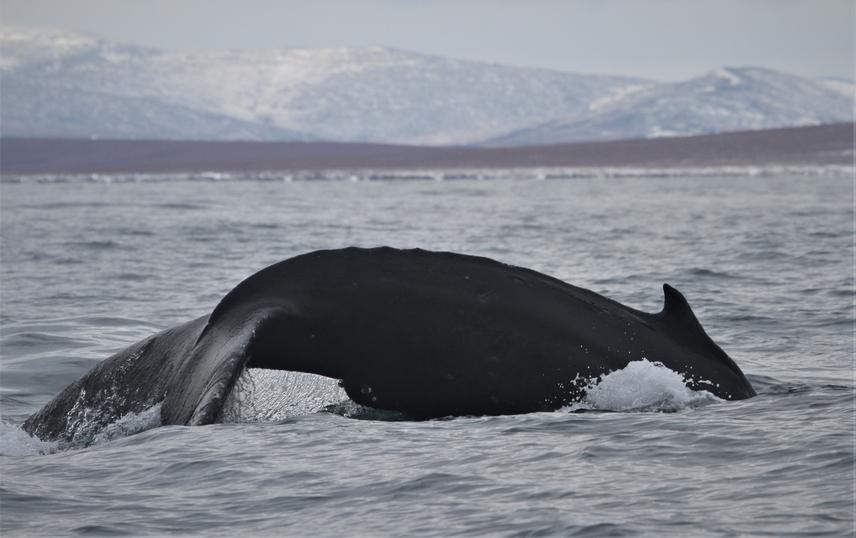Olga Titova
With this project we are going to study a previously unexplored humpback whale feeding aggregation in northern Chukotka in three main directions. First, we make a basic description of the aggregation including the spatial distribution, interchange with other feeding grounds, subpopulation affiliation and seasonal abundance. Second, to evaluate the potential threats to the aggregation from aboriginal whaling operations for the gray whales and from passing the cruise ships through the study area. Thirdly, to establish the foundation for further monitoring, control and management of the studied aggregation for the Beringia National Park which study region belongs to. In addition to direct research measures, we are going to conduct the environmental educational work with the local population in order to increase the level of understanding and responsible attitude to wildlife. We will prepare the educational lectures for schools and community centers about the whale ecology and the importance of their conservation.

Humpback whale feeding grounds in Russia are some of the least studied in the world. In particular, little is known about the hard to reach and undeveloped regions such as the Arctic coast of Chukotka. Due to both recovery after depletion by commercial whaling and long-term climate change, humpback whales appear to be heading north and occupying previously depopulated or new Arctic habitats. This creates a new dynamic among species that will intersect with indigenous whaling of local communities in unknown ways. Previous land-based observations have shown that humpback whales in feeding areas of Chukotka often intersect with gray whales, which are the subject of aboriginal whaling conducted with quotas issued by the International Whaling Commission for local communities. No studies have yet been done to determine the humpback whale subpopulation status, interchanges with other feeding sites and abundance on the northern coast of Chukotka.
Our main method for field work is going to be the photo-identification. We will take photographs of the humpback whales’ ventral fluke as well as the left and right side of the back and fin. We will use these photographs to:
i. contribute to the local humpback whale catalogues;
ii. collect a daily encounter history of each individual for subsequent abundance estimation;
iii. compare the resulting catalogue with the Humpback Whales Catalogue of Russian Far East Seas as well as with other catalogues from both feeding and breeding grounds to summarize all possible resightings of individuals.
We will map the encounters of both humpback and gray whales and evaluate the joint clustering of the resulting distributions.
We plan to find out if there are potential threats to these feeding aggregations from tourist cruises or local whaling if the distribution of these species overlaps to some degree. We would also like to identify, as sources of concern for whales, how far away the regular manoeuvring routes of cruise ships are from areas of whale concentration.
The villages in Beringia National Park are critical to the conservation and nature management of vulnerable Arctic ecosystems around Chukotka. Detailed knowledge about the population structure of such iconic species as humpback whales will be a necessary basis for future monitoring and effective conservation.